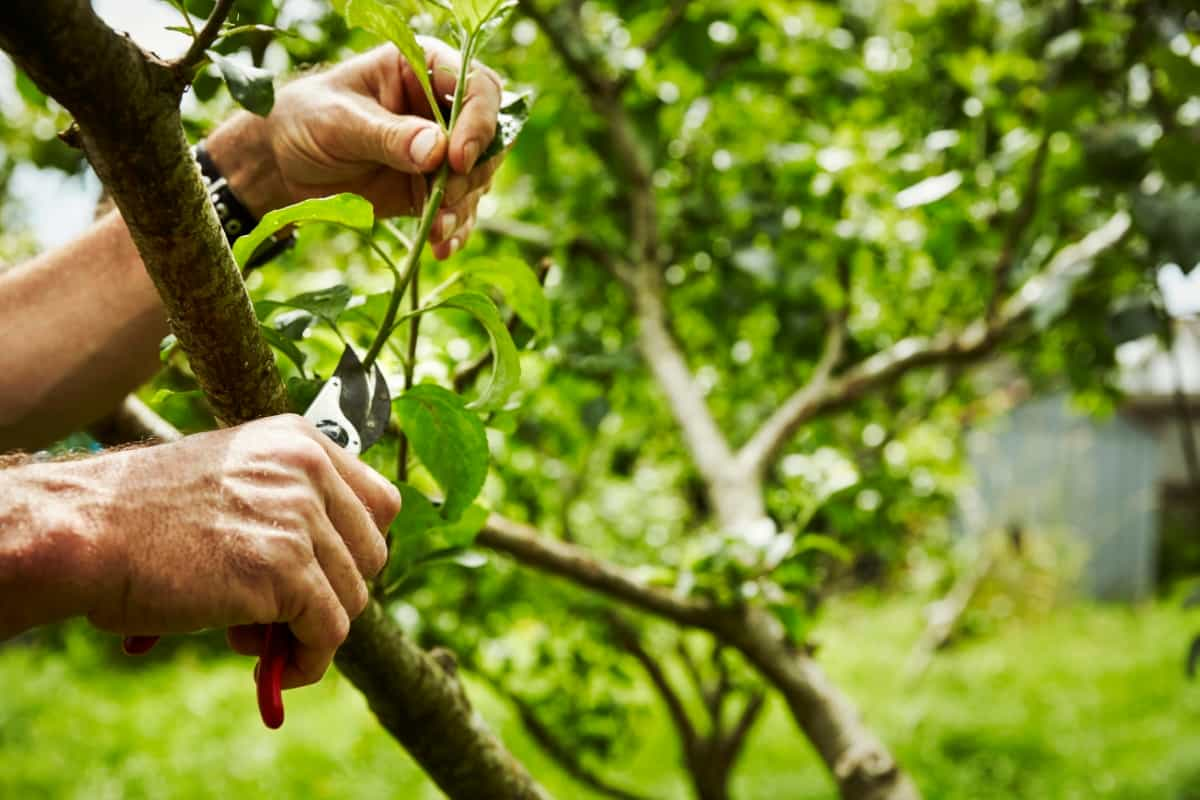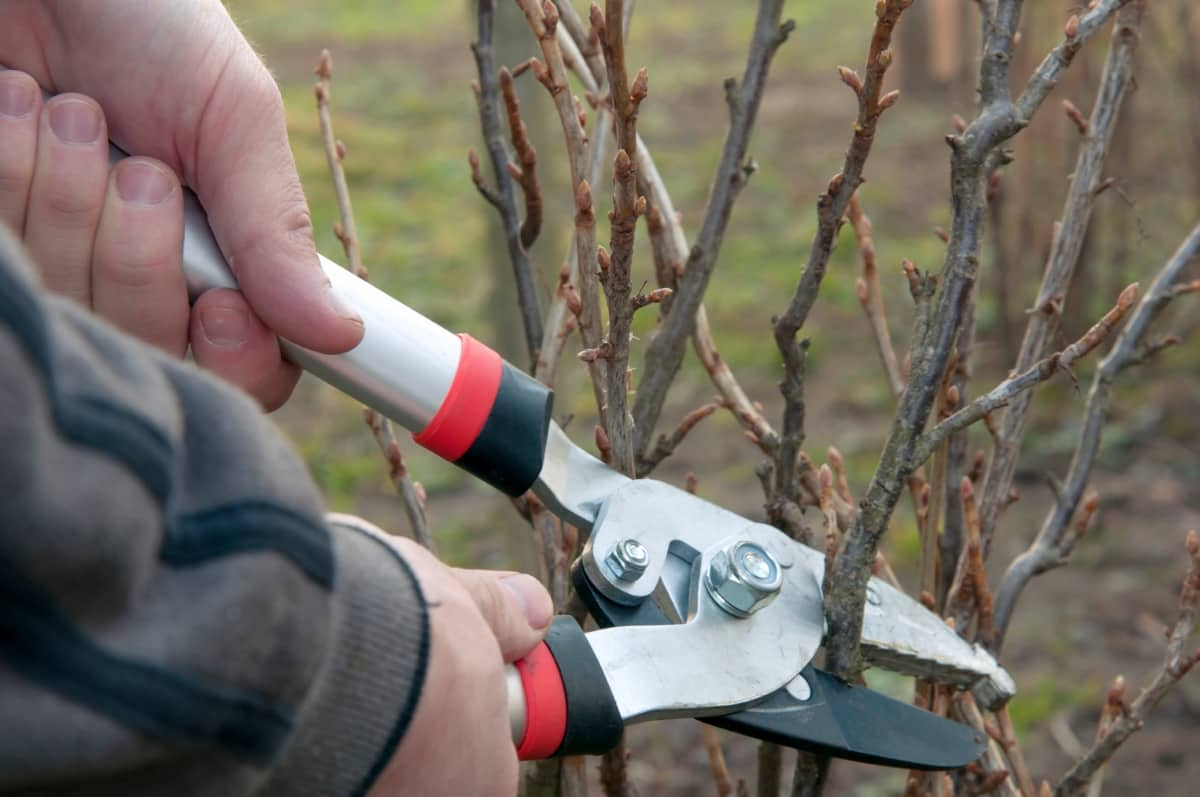Oregon, known for its diverse climate zones, offers a fertile ground for fruit trees ranging from apples and peaches to plums and blueberries. Understanding when and how to prune these trees, particularly when to prune peach trees in Oregon or when to prune plum trees in Oregon, is crucial for a successful yield. Additionally, pruning methods differ; how you prune an apple tree in Oregon might not be the same approach for pear trees. Thus, the timing, techniques, and strategies matter for optimal fruit production and the tree’s overall health.

When to Prune Fruit Trees in Oregon
Importance of Pruning Fruit Trees in Oregon
Pruning fruit trees in Oregon isn’t just about aesthetics. It is necessary to promote tree health, increase fruit yield, and ensure the tree’s structural integrity. Regular pruning aids in the elimination of deceased or unhealthy branches, subsequently diminishing the propagation of ailments. For fruit trees, pruning enhances sunlight penetration and air circulation and allows for the efficient use of nutrients, ensuring bigger and juicier fruits.
Factors to Consider Before Pruning Fruit Trees in Oregon
Before making the first cut, it’s crucial to understand the type of fruit tree you have and its growth pattern. Each tree variety has its unique requirements. For example, the timing for when to prune pear trees in Oregon differs from when to prune blueberries in Oregon. It’s also vital to consider the tree’s age, the previous pruning history, the presence of any diseases or pests, and the tree’s current health. The tree’s location can also influence the pruning approach, whether in an urban garden or a large orchard.
The Best Time of Year to Prune Fruit Trees in Oregon
Oregon’s diverse climate means the best pruning time can vary. However, the general recommendation is during the dormant season, late winter to early spring. This is especially true when considering how to prune fruit trees like peaches and plums. Trees pruned during this time are less likely to suffer from pruning-induced stress or disease infestations.
Winter Pruning of Fruit Trees in Oregon
Winter pruning, typically from December to early March, is the preferred time for many fruit trees in Oregon. The trees are dormant, making it easier to see the tree’s structure and identify branches that need removal. Winter pruning focuses on encouraging vigorous growth in the upcoming spring. This is the prime time to prune peach trees in Oregon and is similarly effective for apple and pear trees.
In case you missed it: Easiest and Best Vegetables to Grow in Oregon: Planting Guide for Winter, Summer, and Spring

Spring Pruning of Fruit Trees in Oregon
Spring is a period of rapid growth for fruit trees. From March to May, pruning should be lighter and mainly focus on removing damaged branches during the winter. It’s also the best time to prune for tree shaping. If you’re wondering how to prune fruit trees like apples or when to prune blueberries in Oregon, early spring is the answer for a balance between shaping and ensuring good fruit yield.
Summer Pruning of Fruit Trees in Oregon
From June to August, summer pruning focuses on controlling tree size and removing excessive growth that might overshadow the fruits. During this period, pruning aims to let sunlight reach the fruits, aiding their ripening. If you have plum trees, this is an essential period to note when to prune plum trees in Oregon.
Fall Pruning of Fruit Trees in Oregon
While fall isn’t the most recommended time for pruning, light touch-ups can be done between September and November. The main goal here is to prepare the tree for winter. However, significant cuts can make the tree susceptible to winter damage, so caution is advised.
Proper Tools and Techniques for Pruning Fruit Trees in Oregon
The right tools ensure you prune your trees effectively without causing undue harm. Sharp bypass pruners, loppers, and pruning saws are essential. The cuts should be clean and made at a slight angle to prevent water from settling. When engaging in apple tree pruning in Oregon, initiate the process by eliminating branches that are deceased, afflicted by disease, or entangled with one another. Always prioritize branches that show signs of disease or hinder neighboring branches’ growth.
Common Mistakes to Avoid When Pruning Fruit Trees in Oregon
Some prevalent mistakes include pruning at the wrong time of year, making ragged cuts, removing too much at once, and neglecting the tree’s natural shape. For instance, knowing when to prune pear trees in Oregon or the specific requirements of peach trees can prevent many of these mistakes. It’s also essential to avoid “topping” or cutting off a tree’s top, as this can lead to poor fruit production and make the tree more susceptible to diseases.
In case you missed it: How to Grow and Care for Organic Oregano: Guide for Planting to Harvesting

Key Strategies for Successful Fruit Tree Pruning in Oregon
The key lies in understanding the specific needs of each tree variety, consistent monitoring, and adopting a proactive approach. Using sanitized tools, making precise cuts, and ensuring the tree has a balanced shape are also pivotal. Timing is vital; knowing when to prune blueberries in Oregon instead of peach or plum trees can significantly impact the yield.
Pruning Calendar for Oregon Fruit Tree Varieties
| Fruit Tree Variety | Winter | Spring | Summer | Fall |
| Peach Trees | Yes | No | No | No |
| Plum Trees | Yes | Yes | Yes | No |
| Blueberries | No | Yes | No | No |
| Pear Trees | Yes | No | No | Yes |
| Apple Trees | Yes | Yes | No | No |
Understanding the Growth Stages of Your Fruit Trees in Oregon
Understanding your fruit trees’ life and growth stages is pivotal in determining the pruning approach. A newly planted tree requires formative pruning, focusing on its structural development. As the tree matures, the emphasis shifts to maintenance pruning, which aims to balance fruit production with growth.
When it comes to older trees, rejuvenation pruning might be necessary. This method aims to revive older trees that might have been neglected or have grown excessively thick canopies. By recognizing these stages, from the initial planting and growth phase of an apple tree in Oregon to the mature and later stages of a plum or peach tree, you can better address its specific needs and ensure its longevity.
Recognizing Signs of Disease and Pest Infestations
One of the primary reasons for pruning is to combat and prevent the spread of diseases and pest infestations. In Oregon, fruit trees sometimes prey on fungal infections, bacterial diseases, or pests like aphids and caterpillars. It’s essential to be vigilant and recognize the early signs of these issues. Some indicators include cutting leaves, discolorations, visible pests, or abnormal growths.
In case you missed it: How to Grow Oregano from Cuttings: Planting Guide for Beginners

Regularly inspecting your trees, especially during the suggested periods, like when to prune peach trees or when to prune blueberries in Oregon, can help in early detection and management. Proactively removing affected branches can stop the spread of such problems and promote the tree’s overall health.
Conclusion
Ensuring the health and productivity of Oregon fruit trees goes beyond knowing when and how to prune. Whether you’re pondering when to prune pear trees in Oregon or how best to handle an apple tree, the journey is as rewarding as the bountiful harvests that await. Investing time and care into these natural wonders ensures a legacy of delicious fruits for generations.
- Feed Your Flock for Less: Top 10 Tips to Save on Chicken Feed
- Ultimate Guide to Ossabaw Island Hog: Breeding, Raising, Diet, and Care
- Hatching Answers: The Top 10 Reasons Your Chickens Aren’t Laying Eggs
- Eggs and Economics: Breaking Down the Cost of Raising Backyard Chickens
- Defend Your Greens: Proven Methods to Keep Iguanas Out of Your Garden
- Ultimate Guide to Cinnamon Queen Chicken: A Comprehensive Guide for Beginners
- Ultimate Guide to California Tan Chicken: Breeding, Raising, Diet, Egg-Production and Care
- Ultimate Guide to Marsh Daisy Chicken: Breeding, Raising, Diet, and Care
- 10 Types of Chicken Farming Businesses You Can Start for Profits